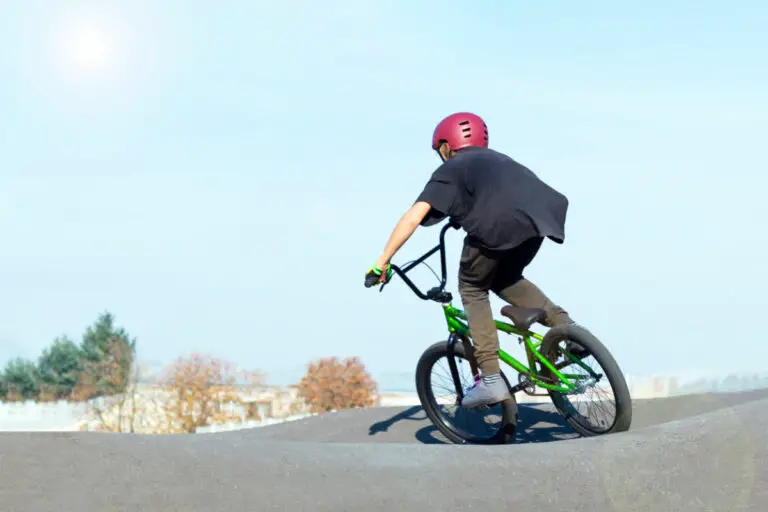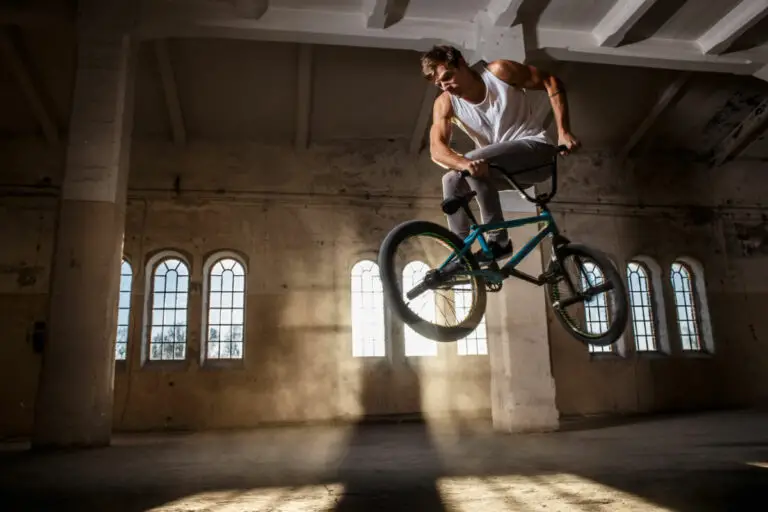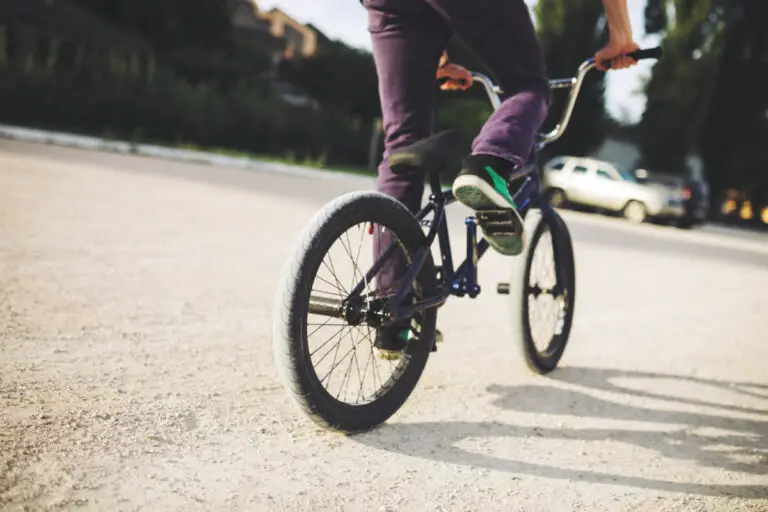What Is A Freestyle Bike?
A type of BMX bike made exclusively for pulling off tricks and stunts is known as a freestyle bike. These bikes have a lot of qualities that make them suitable for tricks and feats, and they are often smaller and lighter than other sorts of bikes
Information about freestyle bikes, including their history, design, parts, and most popular disciplines, will be covered in this page. You’ll have a solid idea of what a freestyle bike is and how it varies from other sorts of bikes by the end of this article.
#1. History of Freestyle Bikes
When BMX racing first started to gain prominence in the 1970s, freestyle bikes already had a long history. Riders started experimenting with executing tricks and acrobatics on their bikes as BMX racing gained popularity. As a result, the freestyle bike—which was made expressly for pulling off acrobatics and stunts—was created.
With a few notable exceptions, the original freestyle bikes were essentially modified BMX racing bikes. They had shorter top tubes and higher handlebars, giving them a more upright riding position. They were also more maneuverable and had a shorter wheelbase thanks to their smaller frames.
Manufacturers started making bikes specially made for freestyle riding as the sport gained popularity. Gyro brakes, pegs, and a larger wheelbase on these bikes made them better-suitable for acrobatics and stunts.
Today, bikers of all ages who enjoy pulling off acrobatics and stunts frequently choose freestyle bikes. They are employed in many different sports, such as park riding, street riding, and vert riding.
#2. Design of Freestyle Bikes
Freestyle bikes are well-suited for tricks and feats because to a number of their design elements. These qualities consist of::
- Short top tube: Compared to other types of bikes, freestyle bikes have a shorter top tube, which makes it easier for the rider to move around and execute tricks like tailwhips and bar spins.
- Upright riding position: Compared to other types of cycles, freestyle bikes have a more upright riding position that makes it easier for the rider to observe and respond to their environment. This is crucial while riding in an environment like a skatepark or the street, where there could be barriers and other dangers.
- High handlebars: Freestyle bikes have high handlebars that make it simple for the rider to execute tricks like tailwhips and barspins. A more upright riding stance, which is essential for maintaining balance and control when performing tricks, is made possible by the high handlebars.
- Longer wheelbase: Compared to other types of cycles, freestyle bikes have a longer wheelbase, which improves stability and makes it simpler to execute tricks like grinds and tailwhips.
- Sturdy frame: The frame of freestyle bikes is strong, which is necessary to handle the strain of tricks and acrobatics. Usually, Chromoly steel or aluminum are used to construct the frame because they are durable and can resist the punishment that comes with riding at a skatepark or on the street.
- Gyro brakes: Gyro brakes, which enable riders to rotate their handlebars 360 degrees without the brakes getting in the way, are frequently found on freestyle bikes. For doing stunts like tailwhips and bar spins, this feature is helpful.
- Pegs: The front and rear axles of freestyle bikes frequently have pegs connected, allowing the rider to grind on fences or do stunts like grinds and stalls.
#3. Components of Freestyle Bikes
Freestyle bikes contain a variety of components that are specifically tailored to the demands of trick and stunt riders in addition to the design aspects noted above. These elements consist of:
- Sprockets: Compared to other types of bikes, freestyle bikes often have smaller sprockets, allowing the rider to pedal more quickly and do feats like hop-overs and manuals.
- Cranks: Compared to other types of bikes, freestyle bikes frequently have shorter cranks, allowing the rider to accelerate pedal rotation and execute feats like bar spins and tailwhips.
- Tires: Wide, low-profile tires on freestyle bikes provide good traction and make it simple for riders to pull off tricks like grinds and stalls.
- Seats: Padded seats on freestyle bikes are frequently low to the ground, which makes it simpler for riders to execute feats like no-handers and seat grabs.
#4. Disciplines of Freestyle Bikes
In a number of sports, like park riding, street riding, and vert riding, freestyle bikes are employed.
Performing tricks on ramps, railings, and other obstacles while riding in a skatepark or other controlled setting is known as park riding. Park riding is a well-liked discipline among riders of all ages and abilities since it enables the rider to perfect their tricks in a secure setting.
Street riding is the practice of riding a cycle in a city environment where one can do tricks on stairwells, railings, and other street elements. As it entails riding in a real-world setting full of possible hazards, street riding calls for a high level of competence and confidence.
Vert riding: A halfpipe or equivalent ramp construction is used for vert riding, where the rider may perform tricks like airs and grinds. A great level of ability and agility are needed for vert riding since the rider must be able to keep their composure and balance while traveling at rapid speeds.
To summarize, freestyle bikes are a particular kind of bicycle made for pulling off acrobatics and tricks. They are utilized in many different disciplines, such as park riding, street riding, and vert riding, and have a number of design and component qualities that make them well-suited for tricks and stunts.
A freestyle bike can be a fantastic option whether you’re an experienced rider trying to push the boundaries of your riding skills or a beginning rider looking to learn some fundamental techniques.



